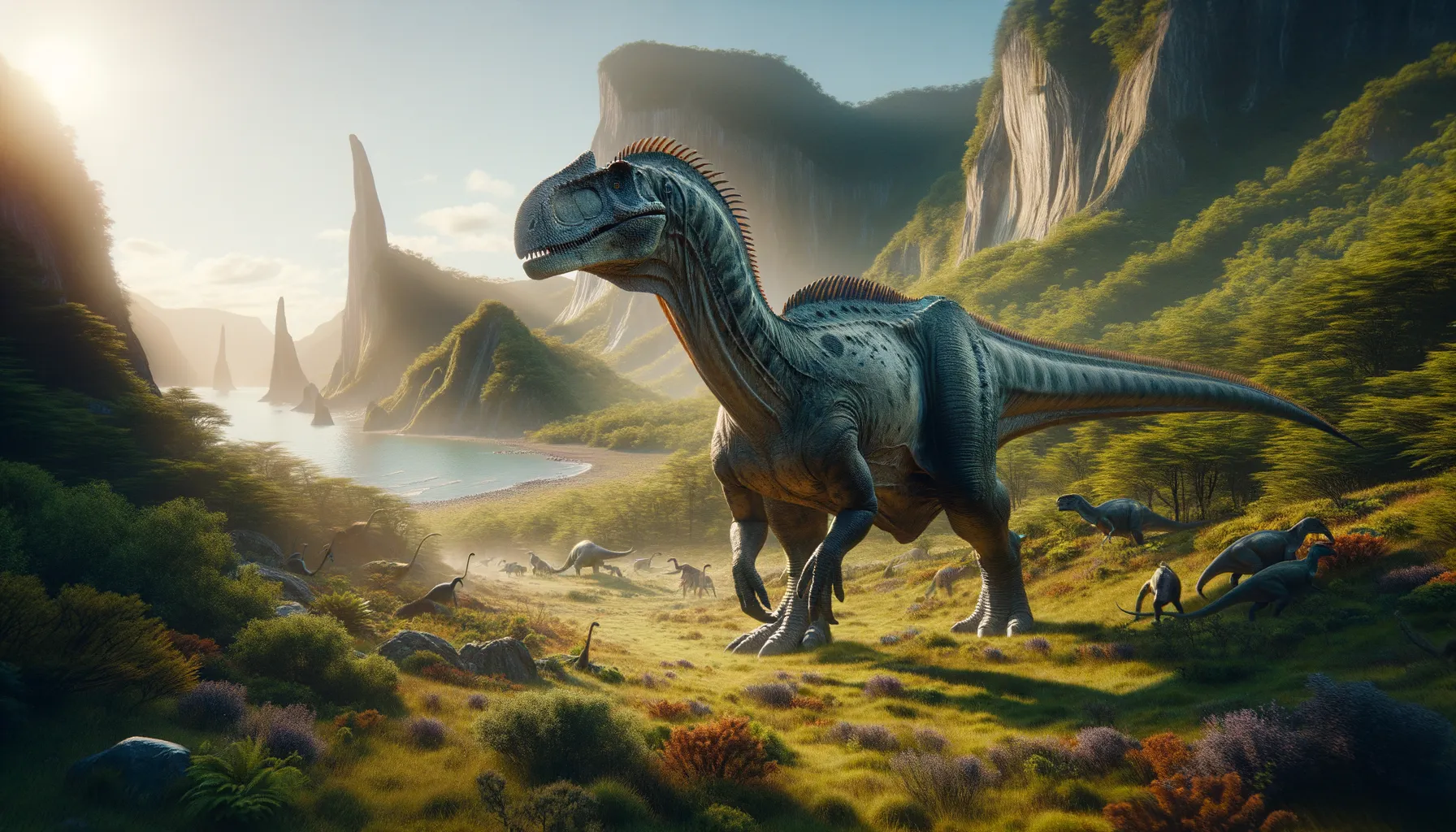
Amargatitanis
The giant of ancient Argentina lands.
Period
Cretaceous
Length
Measured around 15 to 17 meters long.
Height
Could reach up to 10 meters at the head.
Weight
Estimated to weigh about 20,000 kilograms.
Amargatitanis was a colossal herbivore, distinguished by its long neck and large body. This dinosaur roamed the Earth in the Late Cretaceous period and was primarily found in what is now Argentina. Its fossilized remains have provided significant insights into the diversity of titanosaurs in South America, offering a deeper understanding of its ecological niche and lifestyle during its era.
Diet
Amargatitanis was a herbivore, consuming vast amounts of plant material. Its diet included leaves and branches from tall trees, which it accessed easily with its long neck.
Hunting
Being a herbivore, it did not engage in hunting. Instead, it foraged for plant-based food, possibly migrating across vast distances to find enough sustenance.
Environmental challenges
Amargatitanis faced challenges such as changing climate conditions that might have affected plant availability. Predation from large theropods could have threatened younger individuals, forcing adults to be protective. It also had to compete with other herbivores for resources, which could be scarce during dry seasons or droughts.
Speed
Amargatitanis moved slowly due to its massive size.
Lifespan
It likely lived for several decades.
First discovery
Discovered in Argentina by José Bonaparte in 1993.
Fun Facts
- Amargatitanis is a dinosaur that lived during the late Jurassic period, around 150 million years ago.
- Its name 'Amargatitanis' means 'La Amarga Giant', referring to the La Amarga Formation in Argentina where its fossils were found.
- Amargatitanis belonged to the group of dinosaurs known as sauropods, which are famous for their long necks and tails.
- This dinosaur was a herbivore, meaning it fed on plants, likely using its long neck to reach high vegetation.
- Amargatitanis is considered to be one of the smaller sauropods, despite being a part of a group known for giant sizes.
- Its discovery has helped scientists better understand the diversity and evolution of sauropods in South America.
- Fossil evidence of Amargatitanis includes vertebrae and limb bones, giving insights into its structure and locomotion.
Growth and Development
Amargatitanis grew rapidly in its early years, possibly due to abundant food resources. Like other sauropods, it reached its enormous size at a relatively slow pace, as growing large helped deter predators. This dinosaur likely experienced a prolonged period of juvenile growth before achieving full maturity.
Habitat
Amargatitanis inhabited forested regions with abundant plant life, which supported its dietary needs. It thrived in environments where large expanses of land were available for grazing and movement. These areas were likely semi-tropical or subtropical, providing the warm climate necessary for diverse foliage.
Interaction with other species
Amargatitanis shared its habitat with other dinosaurs, including carnivorous species, necessitating social behaviors to protect themselves. It likely moved in groups for safety, like modern elephants do, with adults shielding younger members from predators. While competing for plant resources, they may have coexisted by occupying different ecological niches.
Natural lifespan
Amargatitanis typically lived up to 70 years.
Reproduction
Amargatitanis likely laid eggs in communal nesting sites, similar to other titanosaurs. The eggs were probably laid in large numbers to increase the chances of survival against predators. Parental care might have been limited after laying, relying on numbers to ensure some hatchlings reached maturity.
Social behaviour
Amargatitanis is believed to have traveled in groups for common protection. Its social structure might have revolved around loose herds, providing mutual support during migrations. Communication likely involved vocalizations and perhaps visual displays to maintain group cohesion.
Fossil locations
The primary fossils of Amargatitanis were discovered in Northwestern Patagonia, Argentina. This region is known for a wealth of dinosaur fossils, offering insights into the variety and complexity of Cretaceous ecosystems in South America. Fossil findings help piece together its existence and behavior during its time on Earth.
